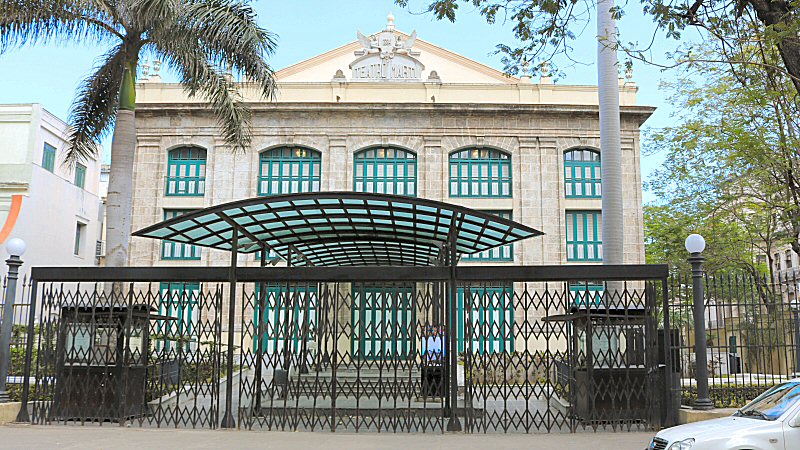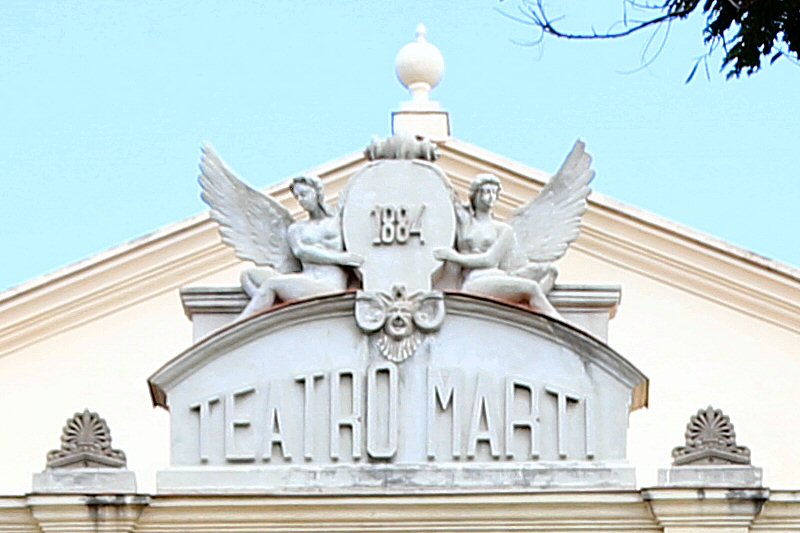
Box office Tuesday–Friday 10:00-12:00
and 13:00-16:00
Possible to buy tickets up until 30 minutes before performance time (daily 17:00-20:30)
The Teatro Martí, initially named Irijoa after the name of his founder the Basque emigrant Ricardo Irijoa, was inaugurated in 1884. Early in the history of the theatre house, it was dedicated to the representations of zarzuelas (musical comedies that preceded cabarets), vaudevilles (a theatrical piece of amusing character, interspersed with songs and dances), operettas and bouffon shows (satirical shows, many of which often mocked the Spanish authorities), even to the performance of a circus. The venue hosted some premieres in Cuba in 1896, such as the Cuban premiere of the opera “La Bohema”, performed by Giacomo Puccini, and the first Cuban libretto, the zarzuela “La Mulata Maria” by Federico Villoch. It was also the venue for public meetings of the Partido Liberal Autonomista (Liberal Autonomist Party).
Inside of the theater, the spectators
were distributed in three sections. The central part was
intended for white families and the section on the right for
single men and women. The section on the left that was
closer to the Agramonte street (former Zulueta street), was for the blacks. This
area was isolated from the rest of the building by a bricked
arch and could be accessed through an independent staircase.
In 1899, its name was changed to
Eden Garden for a few months. In the same year Spain lost
its possessions in Cuba; consequently, the same year the
theater house was reopened with the name of the Teatro Martí,
maintaining its popularity as a buffo theater. Even so,
everything began linked with patriotic themes.
In 1899 the Constituent Assembly,
established on behalf of the President of the United States,
convened here until the beginning of 1901. The members were
charged with drafting the first Constitution for the
Cuban Republic. The debates were done under the threat of
the Amendment Platt. Amendment Platt is an
appendix to the bill of the budget of the Army of the United
States, made to threaten the members of the Constituent
Assembly by the militarily occupation of the island, if the
Constitution as imposed by the United States, would be
not accepted. In 1989 El Grito de Baire zarzuela was
premiered to celebrate the anniversary of the War of
Independence. General Maximo Gomez and other chiefs and
officers of the Liberation Army attended the performance.
The Teatro Martí was also the first
theatre house in Havana that provided its space for film
projection.
A charity activity was also held in
its halls, with the aim of raising the funds needed to buy
the birth house of José Martí and to give it to his mother, Doña Leonor Pérez.
After 1910 the performance program
was enriched by some Spanish artists and companies and the
theatre house passed to its golden age. In this period
famous zarzuelas premiered, such as Cecilia Valdés by
Gonzalo Roig that was staged more than a hundred times from
1932 to 1936, Rosa la China by Ernesto Lecuona, and Soledad,
Amalia Batista and María Belén Chacón by Rodrigo Prats
Lloerens.
After 1959, the Jorge Ackermann
Theatre group was installed in the Martí theatre house and
the pieces by Enrique Núñez Rodríguez and Eduardo Robreño
were played under the musical direction of maestro Gonzalo
Roig. It was never necessary to use microphones despite the
noise of trams and cars that circulated in the surrounding
streets.
On the other hand, the most important fact in the political history of the building occurred in 1955, when the intellectuals Pedro Miret, Armando Hart, Faustino Pérez and Ñico López read the First Manifesto of the July 26 movement, sent from exile, for Fidel Castro during the Orthodox Assembly in the theater. After the revolution the theatre house remained active until 1955, when it closed its doors for a restoration of five months.
In 1977 it was closed again for a definitive restoration held by the Ministry of Culture, as the roof was prone to collapse, and in 1982 it was handed over to People’s Power. In 2014 it was reopened, returning to life again after having being closed for about 40 years. In 2015 it was awarded the National Restoration Award, as it was practically a ruin of which only the facade was preserved. It is declared a World Heritage Site by UNESCO in 1982.
Known also as the 'theater of a
hundred doors' (referencing the French windows adorning the
exterior of the building), the neoclassical building has a
rectangular shape with a gabled roof. It occupies an area of
4.100 m2 in total, of which only 1680 m2 corresponds to the
building and the rest to the outer lobby and the well-kept
garden. Its interior with cast iron columns, marble floors,
carpets, curtains and mirrors, offers a great richness to
the historical building. The boxes have flowered iron gates.
The ventilation and the acoustics are excellent. It has also
a restaurant, an outdoor cafe and a garden with sculptures
and fountains. It has a maximum capacity of total 2.500
spectators.
After a fabulous full renovation,
this late nineteenth-century theatre in that artists such as
Candita Quintana, Blanquita Becerra, Rita Montaner, Carlos
Montezuma, Eduardo Robreno, Federico Piñero, Armando Soler,
Enrique Nunez, Rosita Fornés and Maria de los Angeles
Santana had staged, was brought back from ruins for
classical concerts and operas, while excellent dance
productions and other kinds of musical performances are
staged here, too.


